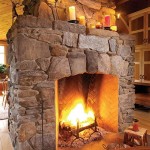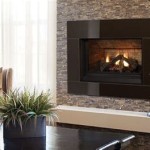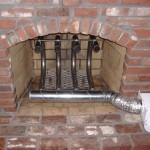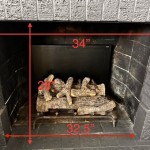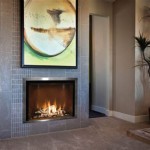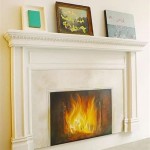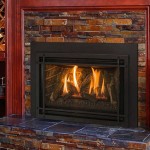How To Make Your Wood Fireplace More Efficient
Wood-burning fireplaces, while aesthetically appealing and capable of providing supplemental heat, are often notoriously inefficient. A significant portion of the heat generated escapes up the chimney, leading to higher heating bills and environmental concerns. However, several strategies can be implemented to substantially improve a wood fireplace's efficiency and maximize its heating potential.
Install Glass Fireplace Doors
One of the most impactful upgrades for improving fireplace efficiency is the installation of well-fitting glass doors. Open fireplaces constantly draw warm air from the room and exhaust it up the chimney. This creates a negative pressure, forcing your heating system to work harder to compensate for the lost heat. Properly sealed glass doors act as a barrier, preventing this continuous drafting when the fireplace is not in use or when the fire is dying down.
Glass doors help to preheat air before it enters the firebox, contributing to a more complete and efficient combustion process. During active burning, the doors radiate heat into the room, increasing the amount of usable warmth produced by the fireplace. It's imperative to choose doors specifically designed for fireplaces and ensure they fit snugly against the opening. Gaps and cracks will negate the benefits of the doors. Furthermore, remember to open the doors slightly during active burning to allow for proper airflow, and always allow the glass to cool completely before cleaning to prevent damage.
Use a Fireplace Insert
A fireplace insert is a self-contained firebox that is designed to be installed directly into an existing fireplace opening. Unlike open fireplaces, inserts are closed combustion systems, meaning they control the amount of air entering the firebox. This controlled environment allows for a more complete and efficient burn, extracting more heat from the wood and reducing emissions. These inserts are available in wood-burning, gas, and pellet versions, offering flexibility based on fuel preference and availability.
Wood-burning fireplace inserts typically feature a cast iron or steel firebox surrounded by a metal shell. Air is circulated between the firebox and the shell and then vented back into the room using a fan. This forced-air circulation significantly increases the amount of heat delivered into the living space. Furthermore, inserts often include features like catalytic combustors or secondary combustion systems that further reduce emissions and improve efficiency by burning off the smoke and gases that would otherwise escape up the chimney. When selecting an insert, it is crucial to choose one that is appropriately sized for your fireplace opening and to have it professionally installed to ensure proper venting and safe operation. Consider the BTU output and the square footage the insert is capable of heating to ensure it aligns with your heating needs.
Optimize Wood Selection and Storage
The type and condition of wood burned significantly impact fireplace efficiency. Burning seasoned hardwood is far more efficient than burning green or soft wood. Seasoned wood has a lower moisture content, typically below 20%, which allows it to burn hotter and cleaner. Green wood, on the other hand, requires a significant amount of energy to evaporate the moisture, reducing the heat output and producing more smoke and creosote.
Hardwoods like oak, maple, and ash are denser than softwoods like pine and fir, meaning they contain more energy per unit volume and will burn for a longer period. To properly season wood, split it and stack it in a location that allows for good air circulation for at least six months, ideally for a year or more. Cover the top of the woodpile to protect it from rain and snow, but leave the sides open to allow for ventilation. Storing wood indoors for extended periods can attract pests, so it is best to keep it outside until shortly before it is needed. Avoid burning treated or painted wood, as these materials can release harmful chemicals into the air. A moisture meter is a valuable tool for ensuring that the wood is properly seasoned before burning.
Ensure Proper Chimney Maintenance and Draft
A clean and properly functioning chimney is essential for fireplace efficiency and safety. Creosote, a byproduct of incomplete combustion, accumulates inside the chimney and can restrict airflow and create a fire hazard. Regular chimney inspections and cleanings by a qualified professional are crucial to remove creosote buildup and ensure the chimney is free of obstructions. Ideally, a chimney should be inspected annually, and cleaned as needed, depending on the frequency of fireplace use and the type of wood burned.
A strong draft is necessary to draw smoke and gases out of the fireplace and up the chimney. Factors that can affect draft include the height and diameter of the chimney, obstructions in the chimney, and the temperature difference between the inside and outside of the chimney. If the fireplace consistently produces excessive smoke, it may indicate a problem with the draft. A professional chimney sweep can assess the chimney and identify any issues that may be affecting its performance. Consider installing a chimney cap to prevent rain, snow, and debris from entering the chimney and obstructing airflow. A properly maintained chimney is not just about efficiency; it's about safety and preventing potentially dangerous chimney fires.
Use a Fireplace Bellows
While seemingly simple, a fireplace bellows can significantly contribute to efficient wood burning. By providing a targeted blast of air, the bellows can quickly revitalize a dying fire, bringing embers back to life and preventing the need to add more wood prematurely. This focused airflow helps to ignite small pieces of kindling and jumpstart the combustion process more effectively than simply adding larger logs. Using a bellows minimizes the amount of smoldering and incomplete combustion, thus reducing smoke and creosote production. It's a cost-effective and practical tool for managing the fire and maximizing fuel efficiency, ensuring a hotter, cleaner fire with less wasted wood.

3 Ways I Improved Wood Stove Heating

How Can I Make My Traditional Masonry Fireplace More Efficient

How To Make Your Fireplace More Energy Efficient Quadra Fire

How To Improve Your Wood Stove S Efficiency

The Key To Burning Wood Cleanly And Efficiently

How To Improve The Efficiency And Heat Output Of Your Open Fireplace Direct Fireplaces

9 Ways To Increase The Heat From Your Wood Burning Fireplace

10 Fireplace Makeover Ideas Before And After Regency

How To Increase The Efficiency Of Your Woodburning Stove

How To Build A Long Lasting Fire Fiveways Fires Stoves
Related Posts

